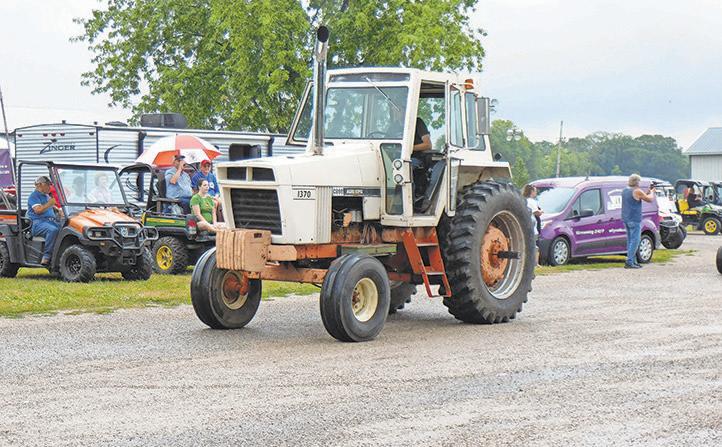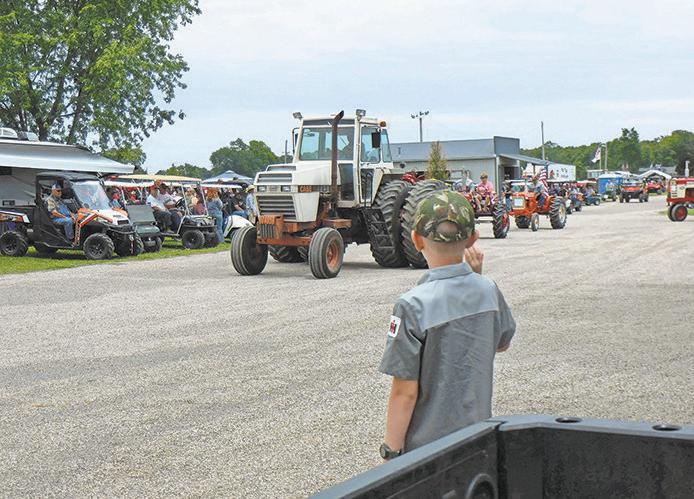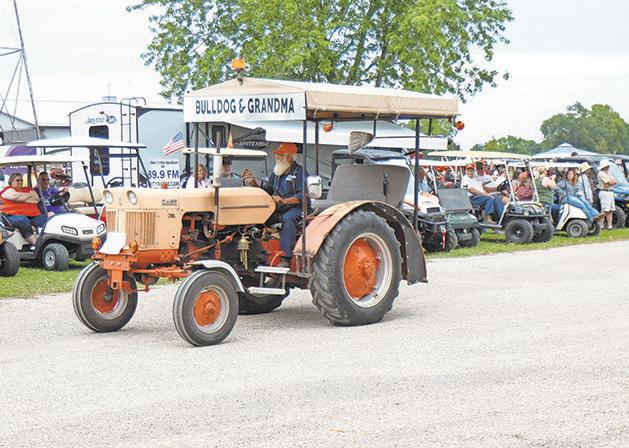











BOARD MEMBERS
President: Chuck Stelter
Vice Presidents: Dean Blackford and Barry Maury
Secretary: J.C. Reitmeier
Treasurer: Gene Schmidt
DIRECTORS
John Bensyl
Dave Bosch
Derek Harms
Kenny Knight
Ed Winkleman
Roger Musson
Membership: Jim Rein
Activity Directors: Russell Buhr and Marvin Johnson
All Events Illinois Time
Gates Open at 7:00 a.m.
THURSDAY CHECK DAILY ATTRACTIONS
9 a.m. Opening Ceremony & Flag Raising
1 p.m. Tractor Parade
6 p.m. Antique Tractor Pull Classes


FRIDAY
CHECK DAILY ATTRACTIONS
ALL DAY-Abe Lincoln here,
9:30 a.m.— 2:30 p.m. Blood Drive: Impact For Life Blood Mobile on grounds
10 a.m. Tractor Games, Grandstand
10 a.m. David Wolfe, John Deere D Speaker, School Cafeteria
10 a.m. — 1 p.m. Photo Booth
11 a.m. Farm Succession Discussion with Cheryl Mitchell, Pavilion
11 a m Kid’s Tractor Bingo, School Cafeteria
12 p.m. John Deere D Tractor Drive on Grounds
12 p.m. — 7 p.m. “Kids Day” Obstacle Course & Putt-Putt Golf, North of Log Cabin
1 p.m, Tractor Parade
2 p.m. — 4 p.m. Bingo, School Cafeteria
5 p.m. ITPA Sanctioned Tractor Pull, Grandstand

SATURDAY CHECK DAILY ATTRACTIONS
ALL DAY-Abe Lincoln here, 10 a.m. Dave Wolfe, John Deere D Speaker, John Deere D Tractor walk around
10 a.m. Tractor Games, Grandstand
11 a.m. Kids Tractor Bingo, School Cafeteria
12 p.m. — 7 p.m. Kid’s Obstacle Course & Putt-Putt Golf, North of Log Cabin
12 p.m. John Deere D Tractor Drive on Grounds
1 p.m. Tractor Parade
2 p.m. — 5 p.m. Photo Booth
2:30 p.m. Kiddie Tractor Pull, Pavilion
5 p.m. IPA Sanctioned Tractor Pull, Grandstands
SUNDAY
CHECK DAILY ATTRACTIONS
9:30 a.m. Church Service at Old Penfield Church
2 p.m. Raffle Tractor Drawing
DAILY ATTRACTIONS
Trading Post
I&I Train
Corn Shelling
Sawmill
Threshing
Potato Digging
Blacksmith Shop
Field Demonstrations
Museum
Old Schoolhouse
Log Cabin
Chicago Pneumatic Engine
Parts and Toy Vendors
(Schedule Subject to Change)
GREAT FAMILY FUN
The I & I Antique Tractor and Gas Engine Club welcomes you to the 2023 Historic Farm Days show in Penfield, Illinois. 2023 marks the 47th year for our club. It will be good to see all of our friends again this year. This year we are featuring John Deere along with the 100th anniversary celebration of the introduction of the John Deere D tractor and E engine.
While at the show, we hope you enjoy seeing all of the exhibits, vendors and other daily attractions. Daily attractions will include: tractor parades, antique and sanctioned tractor pulls, sawmill, blacksmith shop and field demonstrations. The museum, club hall, one room school house and log cabin will all be open for viewing.
Putting on a show like this
would not be possible without our dedicated club members, volunteers, friends in the community and you - our guests. We hope to see you at the show and again in 2024, when we will be featuring J.I. Case, and Dodge trucks.
Enjoy the show - and be safe!
Chuck Stelter- President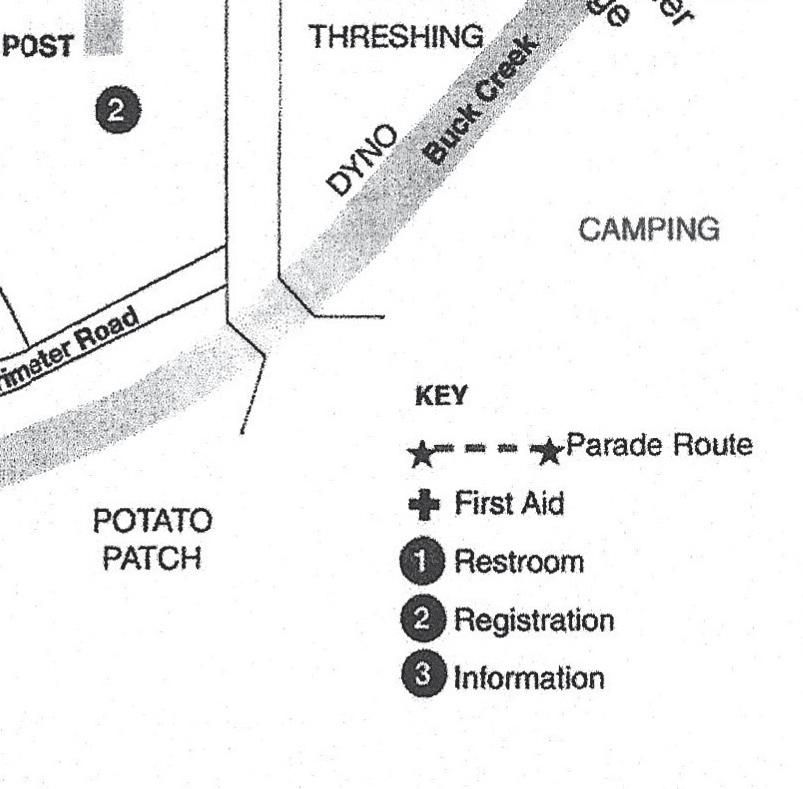
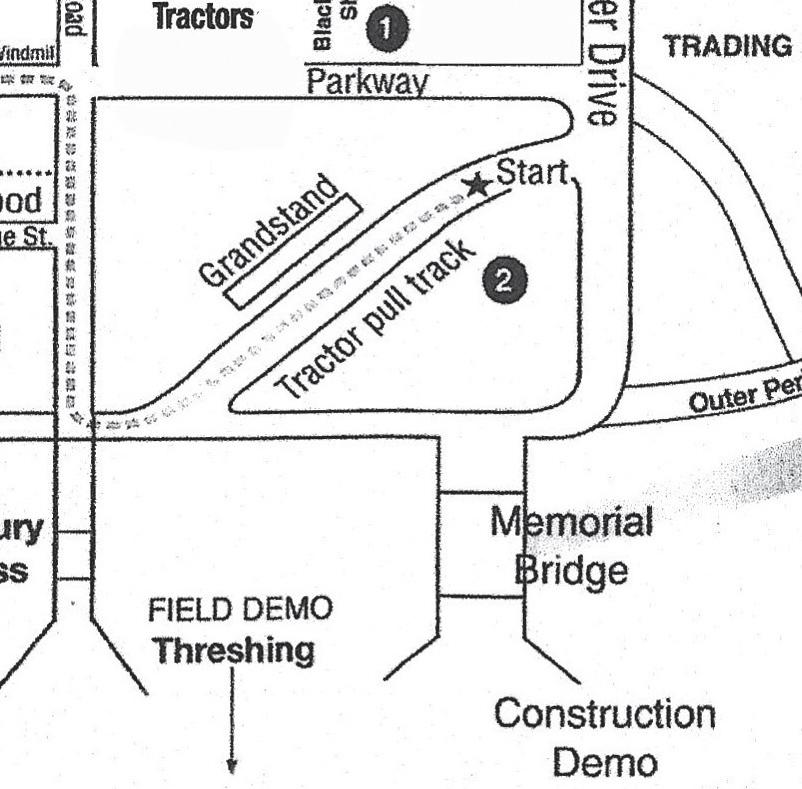


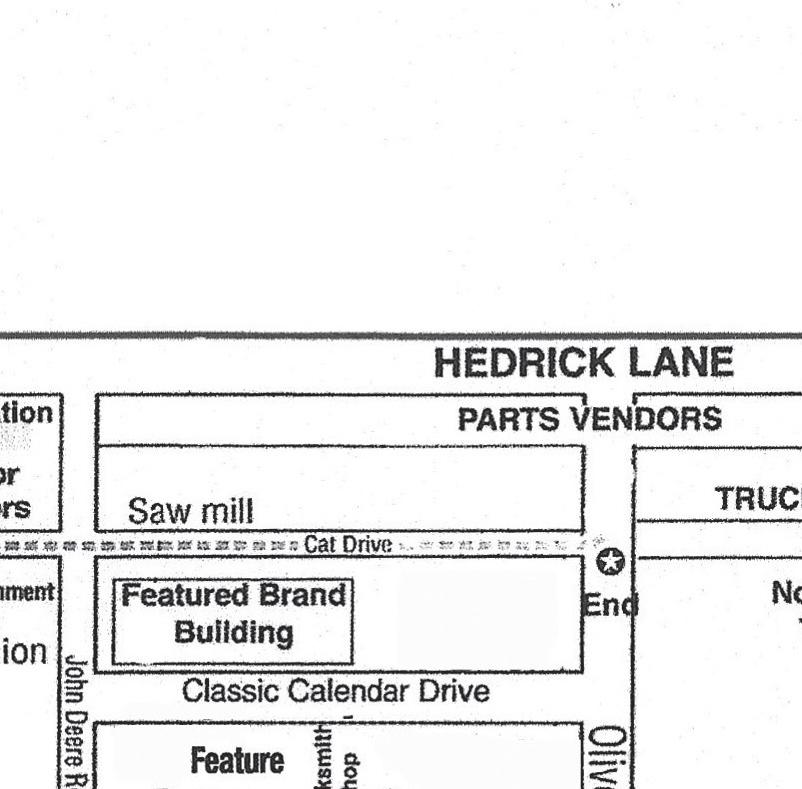

ARMSTRONG, Ill. — To celebrate the 100th anniversary of the John Deere D tractor, a large display is planned during the Historic Farm Days.
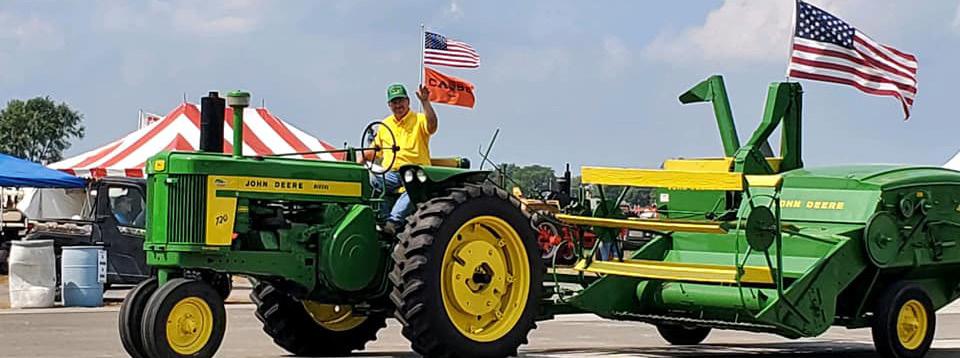
“We are looking forward to having 100 John Deere D tractors there,” said Ed Winkelman, president of the Friends of Green tractor club, which is a branch of the I & I Antique Tractor and Gas Engine Club.
Winkelman has received calls from John Deere collectors located in many states, including Pennsylvania, Ohio, Minnesota and Michigan.
“Some of the guys are bringing semi-loads of Ds,” he said.
The club members are planning some special activities during the four-day show.
“Our plan is to take the Ds to the hillside and make the number 100 with the tractors,” Winkelman said.
Typically, an off-site tractor drive is held as part of the annual event.
“This year, we’re going
to have a drive through the woods with the Ds,” Winkelman said. “These tractors don’t have a road gear. They only run about 3.5 miles per hour.”

John Deere made the D tractor from 1923 to 1953.
“They were the longest-running production tractor that John Deere made,” Winkelman said.
“It was a popular tractor and it did a lot of hard work for the time it was built,” he said. “It didn’t have a lot of power, but it could pull a two- or three-bottom plow,
which was a big step from a horse.”
Winkelman grew up with John Deere tractors since his dad was an “avid” John Deere guy.
“I’ve had as many as 19 tractors, but I’m down to about 11 now,” he said. “My oldest tractor is a 1937 John Deere B, and I have a 1947 D
along with 530s, 520s, 720s and 4020s.”
The collector will have his tractors on display during the show.
“I’m taking everything I have,” he said. “I live only about four miles from the show, so I can just jump on my tractors and drive over to the show.”
In addition to tractors, Winkelman’s collection includes eight or nine plows, a disk, a couple of combines and a John Deere hit-andmiss engine that’s close to 100 years old.
“I have a pretty big collection of lawn mowers and I have the compete collection of Patio John Deere mowers,” Winkelman said.

“In 1969, John Deere decided they wanted to compete with the other manufacturers, so they painted their lawn mowers different colors — orange, red, blue and yellow.”
The collector also will have his Patio lawn mowers on display at the show.
“I’m pretty proud of those,” he said. “I’ll put a bunch of them on a trailer and take them over there all at once.”
In addition to featuring
the John Deere D tractor, the E engines will also be highlighted, which were first introduced 100 years ago in 1923.
“We are also featuring the John Deere 4420 — the new generation tractor that is 50 years old,” the club president said. “And we will have a special feature of John Deere four-wheeldrive tractors.”
Winkelman has been restoring tractors for 50 years.
“I restored the D we’re giving away at the show along with the help of Frank Glenn who donated the tractor,” he said. “He just passed away, so he won’t see us give away his tractor.”
For more information about the Historic Farm Days, go to www.historicfarmd ays.com, or call 217595-5000.
PENFIELD, Ill. — Tickets are selling quickly for the 1925 John Deere Spoker D tractor and the 1965 John Deere 110 lawn mower drawings by the I & I Antique Tractor and Gas Engine Club.
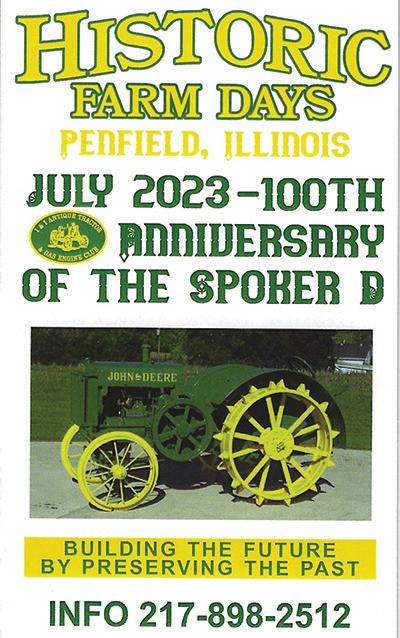

John Deere is the featured brand for Historic Farm Days July 13-16 that will also observe the 100th anniversary of the John Deere D tractor and E engine.

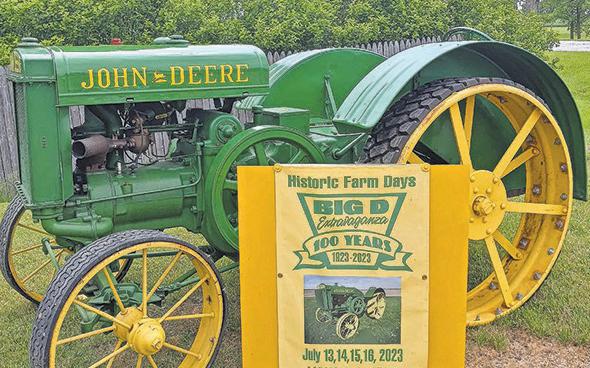

The drawing will be held at 2 p.m. Sunday, July 16, as the show wraps up.
“We have sold somewhere around 250 tickets so far.
We still have some to sell,”
Ed Winkleman, an I & I director, said in early June.
Winkelman, of Armstrong, heads the Friends of Deere Club and is involved in the planning and promoting of this year’s featured brand.
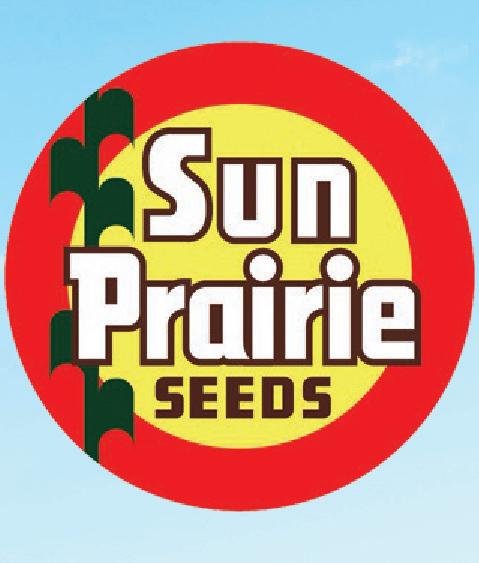
Winkelman started collecting historic John Deere tractors in 1980 when he purchased a 1937 tractor. He’s since accumulated about 20 class John Deeres and has personally restored about 70 tractors over the years.

Proceeds from the drawing support the I & I Antique Tractor and Gas Engine Club.
The first 50 Model Ds
were built by John Deere in 1923. All models from 1923 to 1925 had the spoked flywheel and become known as the Spoker Ds.
The first D with a solid flywheel left the factory in early 1926, the same year the two-speed transmission was introduced.
The Model D was in production from 1923 to 1953, longer than any other tractor model.
PENFIELD, Ill. — From mowers to tractor parts and everything in between, the Trading Post will have a myriad of items for sale throughout Historic Farm Days.

The Trading Post has been a popular one-stopshop feature of the show for about 10 years.
“We take items in from people who want to sell them. They basically set the price and we put it on our lot. That way we have all of the items in one spot to sell,” said David Bosch, an I & I Antique Tractor and Gas Engine Club director.
“They are sold on consignment. After they set the







price, the I & I gets a percentage of the sale price.”







During past shows, the Trading Post has typically featured 100 to 150 items for sale.
Over the years, it’s been a popular must-see spot for antique tractor enthusiasts looking for a part or parts they may need to restore a
tractor.
Sale items also have included used tractors, lawn mowers, machinery parts, tools and other ag-related items.
“The Trading Post is open each day of the show. People start bringing things in Tuesday before the show,” Bosch said.
RANKIN, Ill. — Dean Blackford didn’t want to spend his retirement time sitting around, as he put it, twiddling his thumbs with nothing to do. He took up a hobby 15 years ago so he’d be ready for idle time when it came.




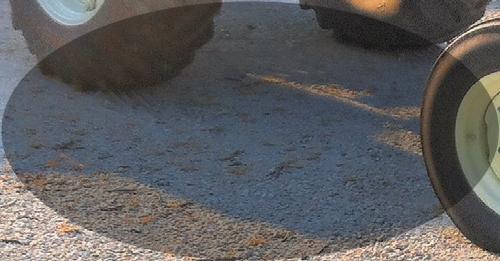
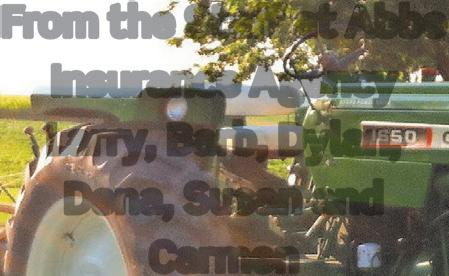

“I decided I’d get a collection going and have something to do when I retired,” he said.








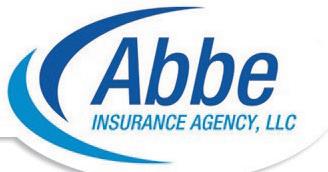
The John Deere tractor enthusiast has since restored numerous tractors to their original glory and will bring his collection to this year’s Historic Farm Days. John Deere will be the featured brand this year at the July 13-16 show. His first restoration was a John Deere H for his grandson, and the next project was a 530.
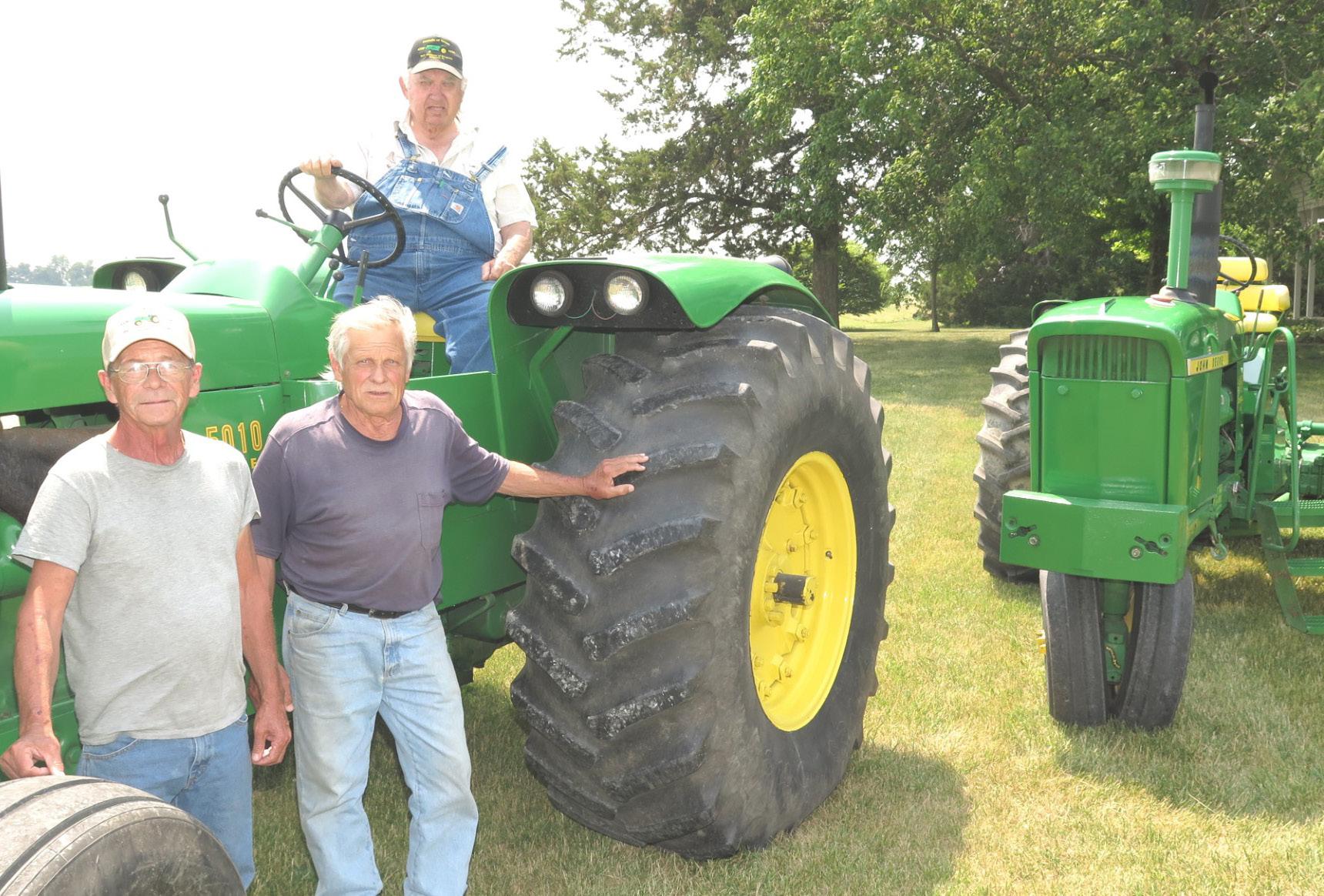

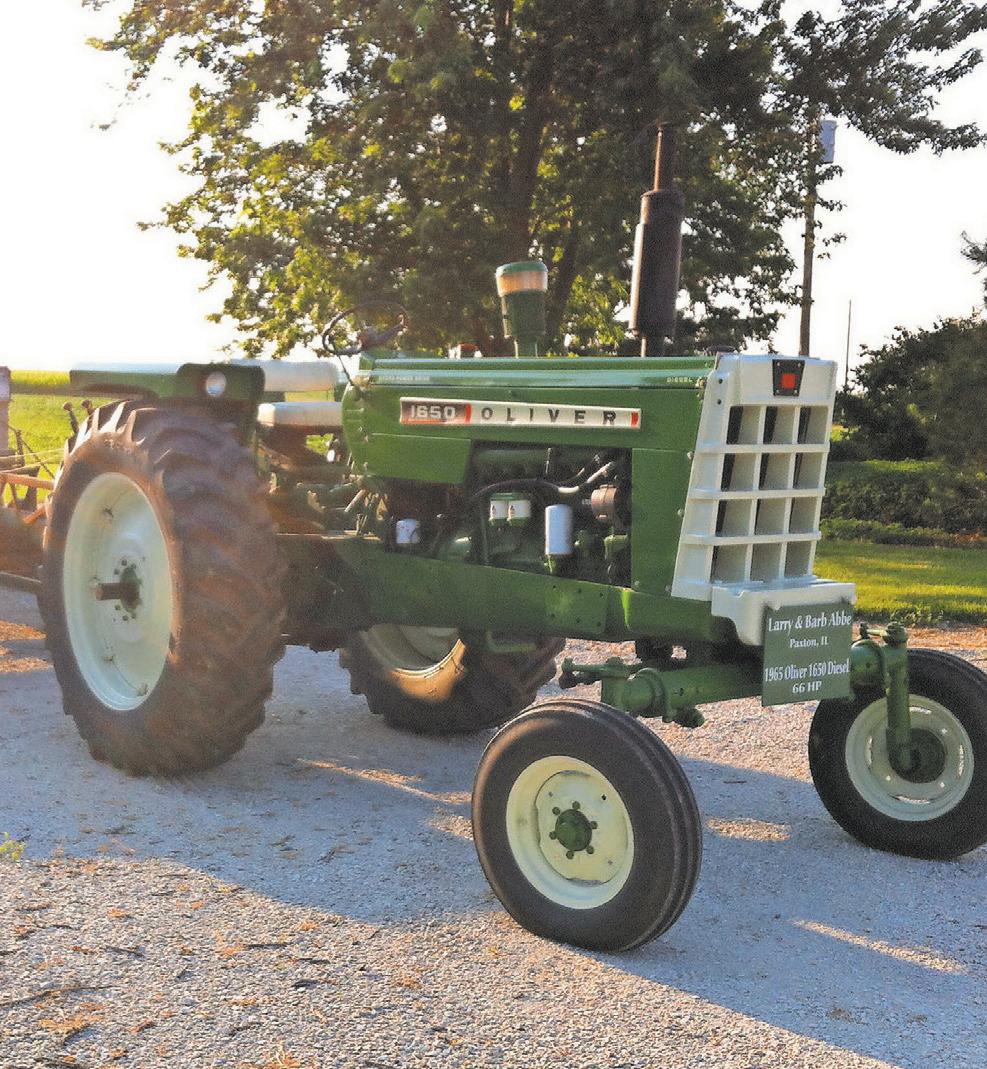
“I decided I’d get a collection going and have something to do when I retired.”
Dean Blackford
FROM PAGE 6
“Then I had this idea that I’d like to have the 10 Series. The first one I got was a 5010 and I restored it and got it in good shape,” Blackford said.
“My neighbor had a 4010 that his grandfather had and I wanted that one and I got it looking good. I got a 3010 that came from Gerald Roberts of Penfield.
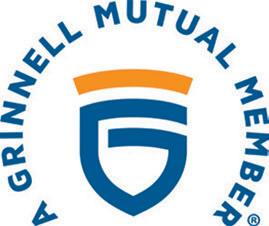
“Then a guy from Eddyville in southern Illinois got in touch with me and wanted to know about a 1010 engine. I told him he’d just have to go to a wrecking yard. I never thought anything about it after that.
“He called me back in two or three weeks and said if I came down there he’d give it to me. I went down, got it and hauled it home. It sat here for a while. He was able to find an engine at a salvage yard in Indiana.”
Blackford was missing
the 2010 and finally was able to purchase one to complete his 10 Series collection.
“I had a lot of problems with the 2010 I bought. My son saw one advertised and he knew I was having problem with the one I bought getting it to go right. So, he bought the one that was advertised. So, now I have the whole 10 Series collection,” he said.
Blackford then had a unique find to add to his collection.
“A buddy of mine had a 3010 gas industrial with a backhoe and a loader on it. The backhoe and the loader were wore out, so I took all of that off and now I have a 3010 gas industrial. It’s the only rare one that I have. It’s one of 190-some,” he said.
“Also, while poking around I found a 4020 that needed an engine and I happened to have one. So, I bought it and put an engine in it, and I got it all restored.
“There’s another project sitting out here, a 4020 gas, that needs to be rebuilt
and all that. I found a combine that still ran, but it was worn out. I’m going to take the engine out of that combine and put it in the 4020 tractor. I’m 77 and I thought, oh, heck, I’ve got one more rebuild in me.”
He also restored a 4020 his son now has.
“One of my good friends, Frank Glenn of Farmer City, who passed away this past May, had said the elevator had a tractor at the John Deere dealer and it was going to cost so much to get it repaired that they would rather sell it,” Blackford said.


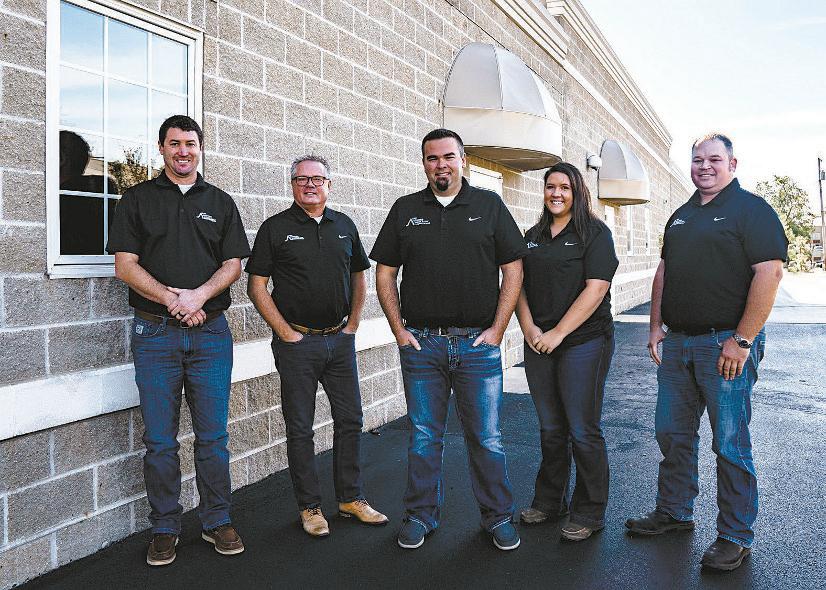

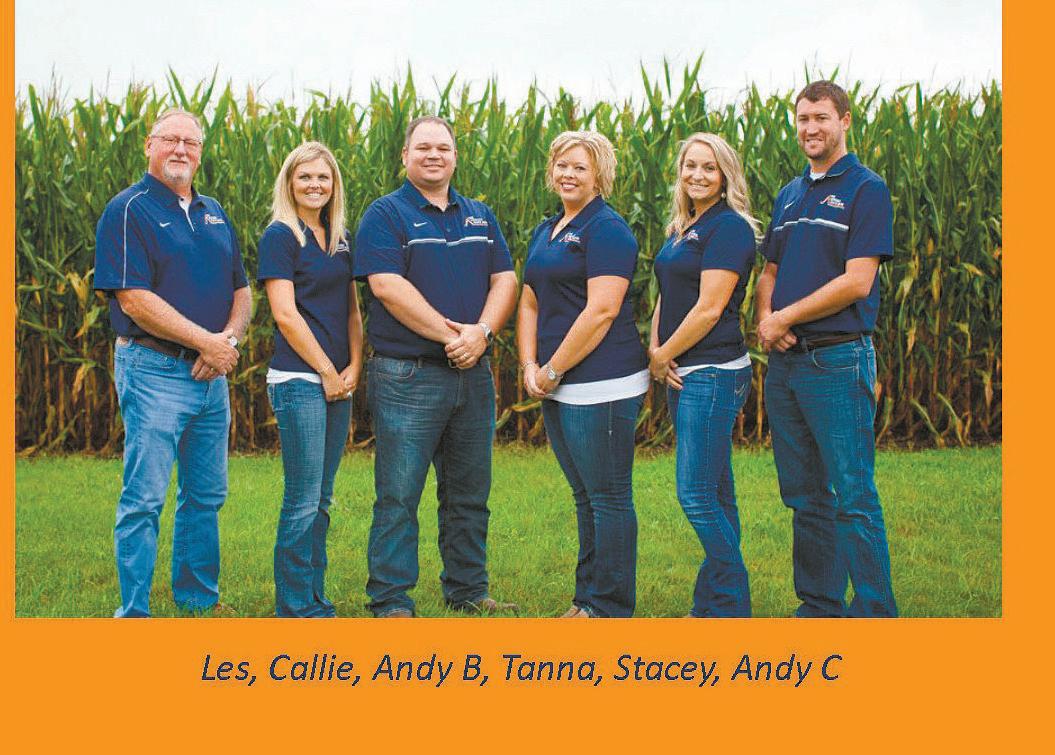
“Frank said it he needed the loader and the roll guard on it, and he said he’d sell me the rest of it pretty cheap. It was all tore apart in pieces. I brought it home and we just set it in the shed because Half Century of Progress was coming up and I didn’t have time to deal with it. So, that winter I fixed it and put it all back together.”
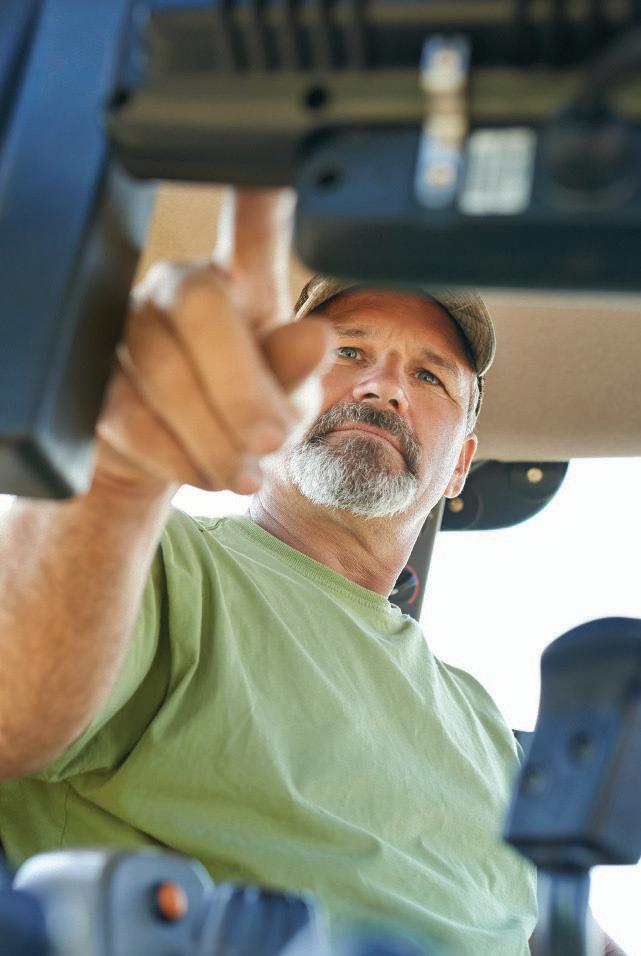
Aaron Carmer and Collin Scherer explain Beck’s Hybrids’ most popular studies in a fun, easy to implement video series on YouTube called “The Dig.”
In Episode 9, they put the fun in fungicides by explaining data-proven ways to be smart about fungicide applications.

“Fungicides primarily prevent or mitigate disease pressure, but they can also increase water use efficiency, photosynthesis and nitrate reductase activity,” Scherer said. “They also
help increase the window for grain fill and improve stress tolerance.”
“When applying fungicides to soybeans, we also get the additional benefit of improved leaf retention, which helps increase yields,” Carmer added.
One of the most important factors to consider when planning for a profitable fungicide pass is timing.
Looking at corn, data has consistently shown that the most profitable fungicide application timing to help combat these diseases is the VT or R1 growth stage.
ning and still have it.”
“These later fungicide applications in corn can help control diseases that tend to move in after pollination — like tar spot, northern corn leaf blight, gray leaf spot and southern rust,” said Chad Kalaher, field agronomist at Beck’s. For soybeans, the sweet spot is the R3 stage.
“When you look at the growth stages of soybeans, approximately 70% of soybean plant yield comes from the middle of the plant, or nodes 6 to 13,” Kalaher said. “Those nodes are usually present at the
R3 growth stage.
“That’s why it’s so important to ensure you’re hitting this crucial stage in the crop’s development. The R3 stage in soybeans is identified by having at least one pod that is 3/16 inches long at one of the four uppermost nodes on the main stem of the fully developed leaf.”
When it comes to the most effective time of day, earlier is better.
“When it comes to fungicides, the early bird gets the worm,” Carmer said. “Our data indicates that fungicide applications are
FROM PAGE 7
John Deeres were always an integral part of his family’s farm while growing up, and Blackford began working for Deere as a mechanic in the early 1960s just after the 10 Series was rolled out.
The 4010 was the primary attraction of the new 10 Series introduced by Deere in 1960. It was touted as the “new generation of power,” which consisted of four- and six-cylinder tractors to replace the two-cylinder tractors.
“Back in the critical years when the 4010s came out I started working for John Deere as a mechanic. I worked for Deere for few years and then I started farming,” Blackford said.
“The two-cylinder putt got me involved. I kind of liked that. That’s one of the reasons why I got involved in this hobby. I had a two-cylinder 70 and my kids were asking me what it sounded like. They said, ‘that’s not a six-cylinder.’ So, I thought I’d get it running for them. I got it run-
Blackford is a strong believer in preserving agriculture’s past and its importance as an educational tool.
“There was a lot of hard work done back in those days. There are so many kids that don’t know anything about agriculture,” he said.
“One time at Historic Farm Days I had a friend of mine on the Gator with me and his daughters were in the back. I asked the girls where potatoes come from. They said the grocery store. I asked them where it came from before it got to the grocery store. They said a truck brings it in.

“So, I drove out to the potato patch at the show. I gave them a screwdriver and asked them to dig underneath some plants. They did and brought out a couple of potatoes and their eyes got big. I think more of that needs to go on these days.
“As farming progresses, there’s less and less youth on the farm. I was on the school board for a long time and kids have always had a special place in my heart and every time I get a chance I’d talk about the farm.
“My granddaughter is an ag teacher in Paxton. During FFA Week they
have a petting zoo and I always take a tractor in there and any child that wants to
“The Dig” co-hosts Aaron Carmer and Collin Scherer break down Beck’s Hybrids’ most popular studies on YouTube. According to Beck’s seven-year, multilocation data, there’s a 3.8 bushel per acre average yield gain and over $17 an acre average ROI advantage to applications made at the R3 growth stage in soybeans.
most effective when applied in the morning, as dew can help spread the fungicide over the leaf’s surface.
“Three-year, multilocation data shows a little over $10 an acre return on investment advantage
can get up on the tractor. If they need help getting on it, a couple of high school kids
on corn and a little over $5 return on investment advantage in soybeans at applications made at 8 a.m. versus 3 p.m.”
Watch free episodes of “The Dig” at https:// tinyurl.com/5752mc76.
help them get on the tractor. So, at least at that age they get to sit on a tractor.”
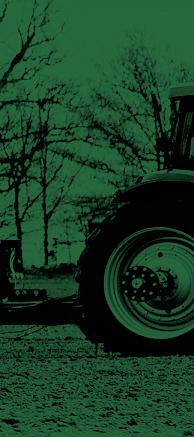






PENFIELD, Ill. — Special workshops featuring the John Deere D tractor will be held during the Historic Farm Days.
“I am going to do a workshop or two and a walkaround with the D display,” said David Wolfe, who grew up on a farm that had two-cylinder tractors and has been restoring tractors since the early ‘90s.
“With the walk-arounds, you can point out differences in tractors and the crowd helps you, because there are little things you don’t see, but the crowd sees,” Wolfe said.
“When I start a workshop
or walk-around, I say we’re all going to learn something today and I will be one of the people learning.”

The John Deere D is the featured tractor at the show, hosted by the I & I Antique Tractor and Gas Engine Club, to mark the 100th anniversary of the tractor that was made from 1923 to 1953.
“It was the longest produced tractor in the John Deere line,” Wolfe said.


“Farmers liked its simplicity and it was rugged and durable.”

The D tractor came with a new engineering feature.
“This tractor has enclosed gearing which kept
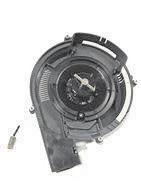

the chains and gears inside and running in oil,” Wolfe said. “For the tractors that preceded the D, the gears were out in the dust and dirt, so the new feature was one of the reasons why the
D was so long-lasting.”
In addition, the John Deere D ran on kerosene, which was a low-cost fuel.


“The D was classified as a three-plow tractor, so it could pull a three-bottom plow and the later Ds had more horsepower so they could pull four-bottom plows on lighter soil,” Wolfe said.

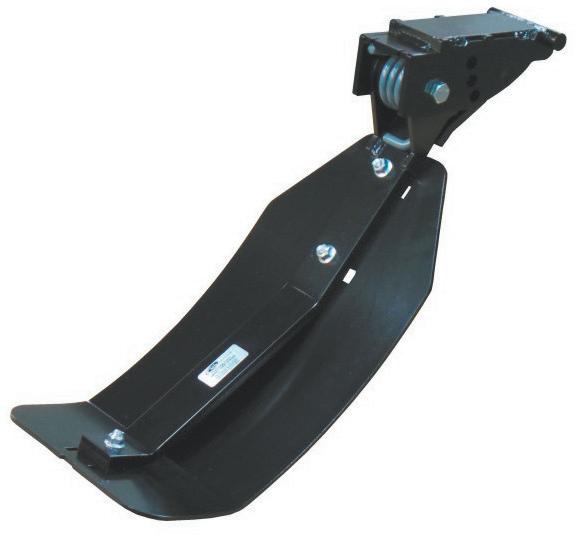

“The reason the D tractor faded out was it only had three speeds forward and one reverse and most other tractors in the John Deere line had six speeds forward,” he said. “And the D did not have a road gear, so when farmers traveled from one farm to the next, it was very slow.”
Wolfe is no stranger to conducting workshops. He has presented workshops at the Gathering of the Green since 2006 and has also or-
ganized the workshops for the Classic Green Reunion.
In addition, Wolfe is an author, completing a book about John Deere plows in 2006.
“I wrote another book featuring all the John Deere two-cylinder era plows,” he said. “And I wrote a book on newer generation plows from 1960 until they closed the plow factory in 1989.”
Wolfe was raised on a Wisconsin dairy farm.
“I worked as a heavyequipment operator for over 37 years and ran a lot of John Deere yellowpainted stuff,” he said.

One of the special tractors in Wolf’s collection is a 1951 John Deere A.
“That tractor was bought used a year or so before I was born and I still have it,” he said.
The collector likes to work on his tractors.
“We try to do the restoration work ourselves, but we don’t restore as many as we used to,” he said. “We do a lot of repair work and we like the original patina look.”
Wolfe enjoys attending events where he can put his antique equipment to work.
“We love to take our tractors plowing so we plow every spring and fall,” he said. “Once you get the tractors working, they run so much better.”
In August, Wolfe plans to attend the Half Century of Progress Show in Rantoul.


“I’ve gone there a lot of years and set up as a vendor to sell plow books and plow parts,” he said. “This will be my first trip to Penfield and I will also have plow books for sale at that show.”

“When I start a workshop or walkaround, I say we’re all going to learn something today and I will be one of the people learning.”
David Wolfe


PENFIELD, Ill. — An auction company that nears its 40th anniversary and has a large audience for its online bidding platform continues to show its support for preserving agriculture’s history.

BigIron Auctions is a major sponsor of the Half Century of Progress, set for Aug. 24-27, and Mark Stock, who founded the business along with his brother, Ron, appreciates the work of the I & I An-



tique Tractor and Gas Engine Club in keeping the past alive.
I & I’s annual Historic Farm Days is slated for July 13-16 in Penfield.
“I & I is a great organization. I think it’s important


to maintain the history of agriculture,” Mark Stock said.

Stock added that he has cousins who are a generation removed from farming “who have no idea how corn is grown, how tractors run or the amount of work that goes into raising food.”
“It’s automated today. I tell my kids, who farm, that they don’t have any idea how easy they have it when they get inside their climate-controlled cab and push that auto-steer button,” he said.

The Stocks grew up on the family farm in Ne -


braska, two hours west of Omaha.
“I remember being on an IH 806 with a six-row planter. You didn’t get any time off because just as soon as you got done planting, you had to turn around and start cultivating the corn that was only two inches tall because the weed pressure was coming,” Stock said.

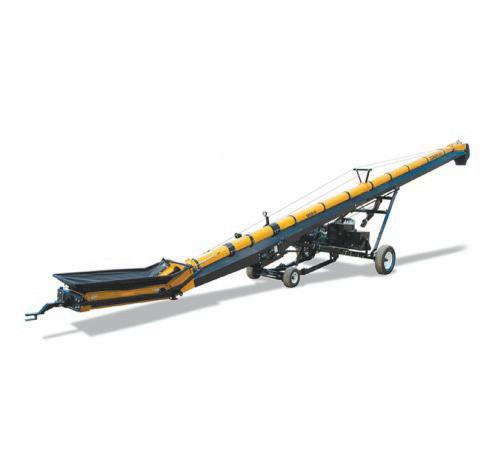
“Nobody used herbicides like they do today. We had to cultivate everything twice. We even had to rotary hoe some stuff. That’s just the way it was. That’s how we controlled weeds.”
The seeds of what is now BigIron took root in the early 1980s when farmers were struggling to make ends meet.
“BigIron first started out as Stock Auction Company with my brother, Ron, and I in 1984. We started doing some auctions, mostly household sales. In the beginning of the 1980s, my dad was a farmer and he said, ‘you guys are going to have to find something to subsidize some income here’ because things were tough,” Mark said.
See AUCTION, Page 13
FROM PAGE 12


“Ron went to auction school and began doing small benefit auctions at halftime of the basketball games selling pies and cakes, and then some folks who were moving asked if he could do their household moving away auction. I was in college at the time, and he asked me to do the paperwork.

“That turned into more household auctions, and after a few years, we were able to get a few farm machinery sales. We were young and aggressive, and we weren’t scared to get dirty. We farmed since we were old enough to stick a clutch in on tractor, so we could run about any tractor or machine.”
He recalled one of the earliest sales they conducted for a farmer in failing health.
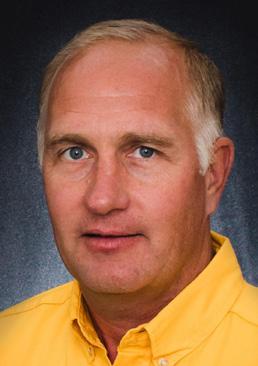
“His wife called and said her husband couldn’t do much and their kids lived in another state and asked if we could help them. We were there for three weeks lining everything up, cleaning everything up, shining it up, advertising, taking pictures. Back then nobody had a website. We marketed it and had a phenomenal sale. There were a lot of people there because they had late-model equipment that drew a lot of attention,” Mark said.
Word spread after the auction of the Stocks’ willingness to do all the extra work.
“The phone started ringing after that sale, and we had created our ‘niche,’” Mark said.
Many families were in the same situation in Nebraska and Kansas and that is how the business grew.
“Please liked us because we knew equipment and we could describe items
well because we were farm kids,” Mark said.
As the business grew, so did technology and the endless opportunities that would provide.
The notion began in the late 1990s when their cousin married a “computer guy” who suggested that auctions should be broadcast via internet.
“I said we have dial-up internet in rural America, there’s no one going to sit and listen as their phone squeaks and screeches when it dials up. That isn’t going to happen,” Stock said.
Tragically, their cousin’s husband died in a car accident, but the thought of entering the internet world of auctions remained and Mark wrote some letters to a university about developing software that would allow for auctions to be broadcast in real time over the internet.
“There were a few people doing it at fixed sites like the fancy auction house in New York, but nobody was doing it in a remote rural setting. We developed a product in 2001 that worked very well for several years,” he said.
Then in 2008, ethanol came into play that provided strong support for corn prices.
“Farmers were making more money than they ever made in their life selling corn for $3.60 a bushel. Our average of three and a half auctions every week across six states went down to three and a half auctions every month. No one was retiring, so we only conducted auctions because of health issues or for estates,” Stock continued.
“There were farmers who had four or five items for sale, and they would ask when we were going to have a consignment sale in the area.” he said.
FROM PAGE 13
“We said it wasn’t effective to do a consignment auction unless there was enough equipment to jus -

tify the advertising spend.
“We decided to turn our real-time auction experience into a timed-only auc -

tion. So, in February 2009 we had the first timed only BigIron auction. We were still known as Stock Auction Company.

“The first online auction had 21 items and 890 people registered. Items sold unbelievably well. Farmers had money in 2009 because of ethanol. Farmers were used to selling corn for half the price and they were willing to take a chance and buy something that they couldn’t touch and feel.


“It worked out well because right after that first sale we had people interested in selling their excess equipment.


“We put ads in the newspaper asking if there was interest in selling some of their excess equipment over the internet on our online-only platform — bigiron.com — give us a call or attend the public informational meeting place. The rooms were




packed.
“We had five meeting locations and the rooms were packed full of farmers wanting to learn about the online platform.”
As a result of those informational meetings, interest grew and they had 65 sales item sell the next month and over 175 online items a month later, Stock said.
“We went to two auctions a month and in less than six months we went to one auction every week and it’s been growing ever since,” he said.
“We changed the name from Stock Auction Company to BigIron when we noticed people were registering on the internet from all over the U.S. and many areas had never heard of Stock Auction Company.”
BigIron now has 305 sales reps across the United States.


“We changed our real estate platform to align with the way we do the machin-
ery and that worked out really well and now we’re adding livestock,” Stock said.
“We acquired Sullivan Auctioneers in Hamilton, Illinois, last July. Their company mirrored everything we were doing. Sullivan didn’t have their own technology and they wanted to build their own. They were in the process of doing it and that’s extremely expensive. It was a natural fit for us to put the two companies’ people and processes together and make it work.
“All of our auctions are timed only. Sullivans do virtual auctions to sell real estate, but we moved everything else to the BigIron bidding platform. We have over 600,000 registered bidders and will have 1.4 million different IP addresses every month view our website. We have a tremendous viewing audience and it is growing every day.”









PENFIELD, Ill. —
Whether it’s 20 horsepower to 150 horsepower to 1,700 horsepower, the tractor pull schedule at the 2023 Historic Farm Days offers something for every tractor enthusiast.
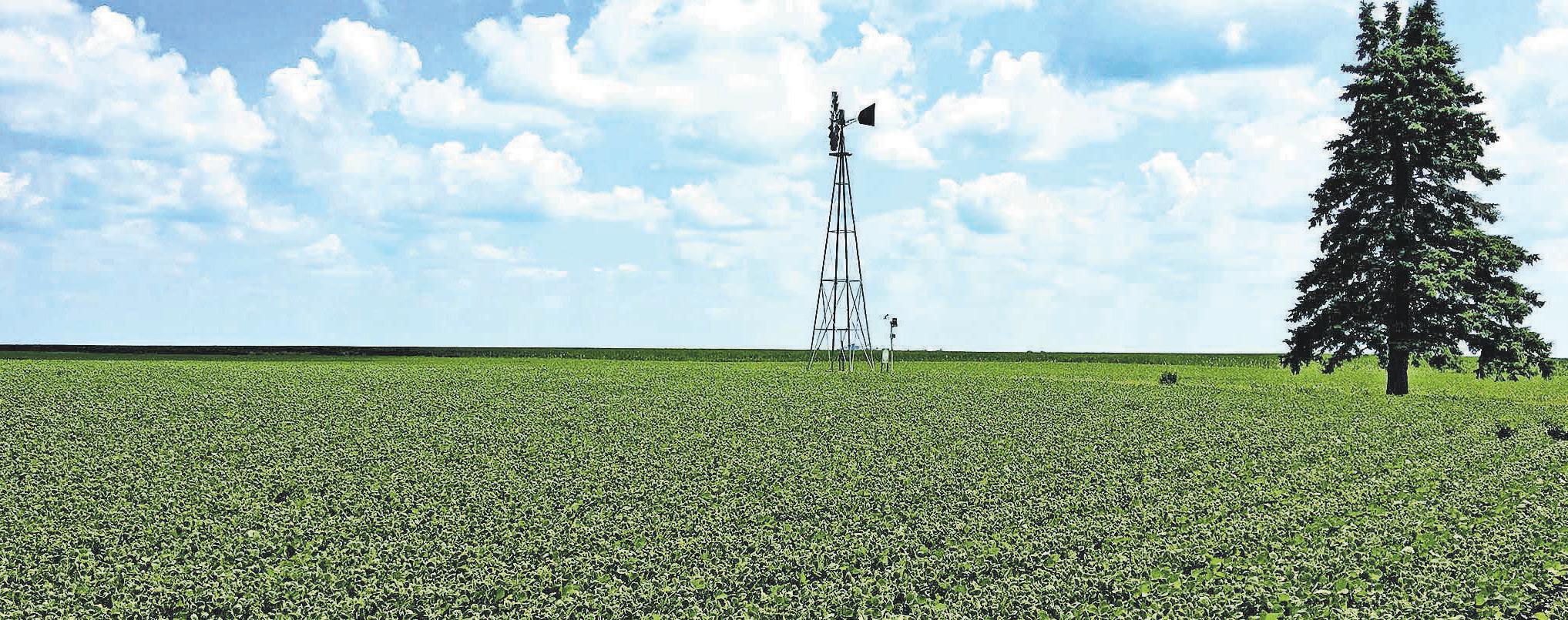
“We will have sanctioned tractor pulls and then we’ll be pulling plow tractors, the antique show tractors,” said Andy Buhr.
Buhr, along with Derek Harms, coordinates the tractor pulls for Historic Farm Days. This year, the antique tractor pull classes start at 6 p.m. on Thursday, July 13.
The Friday night pull is sanctioned by the Illinois Tractor Pullers Association and pulling starts at 5 p.m.
There will be nine pulling classes on Friday night and eight classes on Saturday, with two tracks and
two sleds running both nights. The Saturday night pull is sanctioned by Illiana Pullers Association and starts at 5 p.m.
From wherever fans want to watch, there is plenty of seating available.
“We have seating under roof, we have other bleachers available, plus there is plenty of room for trailers on the other side and we have room for golf carts to park,” Buhr said.
Buhr said tractor pullers can register the day of the pull.
Technology has changed the face of tractor pulling.
“Tractor pulling has gone through a unique change over the years. It started off with only a handf ul of classes. Since then, the classes have been refined by turbo size and cubic inch, where, years and years ago, it was by
weight,” Buhr said.
“There are a lot more classes available for people to pull in today because of the technology we have today, with turbo chargers and camshafts. The technology has changed so much that a tractor that was competitive 40 years ago wouldn’t be competitive even in a begin-

ner-level class now.” Planning for the pulls starts early, Buhr said. “We start working on it in December. We get the insurance lined up, that is one of the biggest things we have to deal with today, getting insurance for the event and making sure everybody is taken care of,” Buhr said.
“Then we get the sleds booked. That has to happen early, because there are only a handful of operating sleds, it’s such a specialized piece of equipment. The good thing is that since we’ve done this for so long, we’ve got a good idea of what has to happen and when.”
Buhr said he’s been co -
ordinating tractor pulls for around 15 years. He’s no stranger to the popular motorsport — he owns and operates “Frankenstock,” a superstock Minneapolis Moline G-1000. Buhr, who follows the Illinois Tractor Pulling Association circuit, said he won’t be pulling at Historic Farm Days.





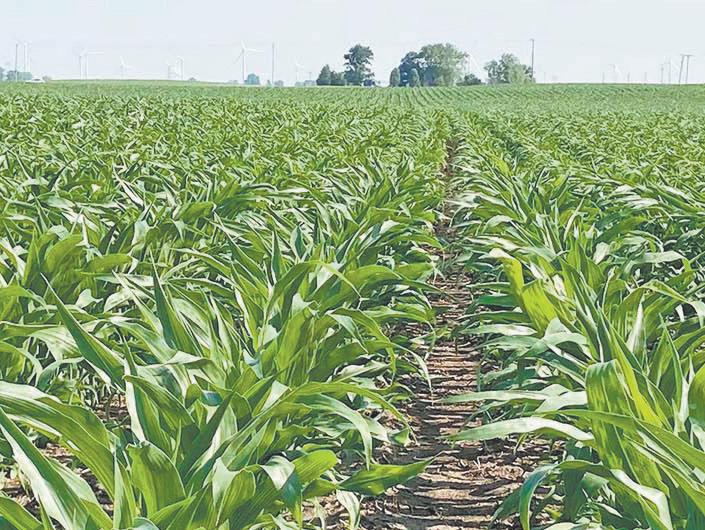



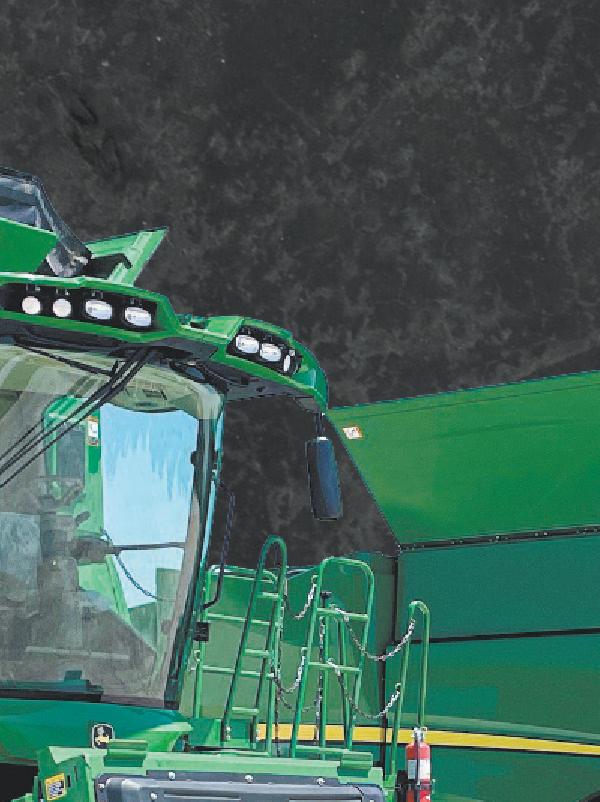


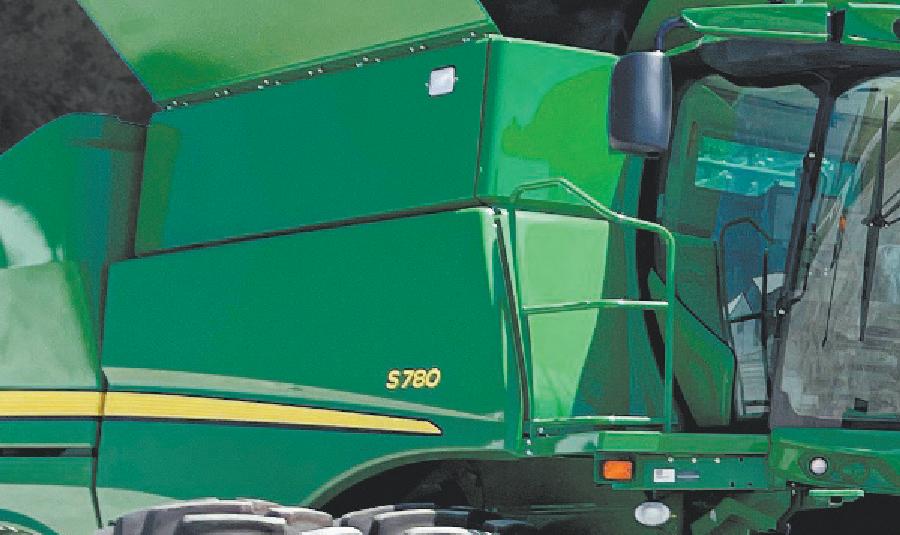

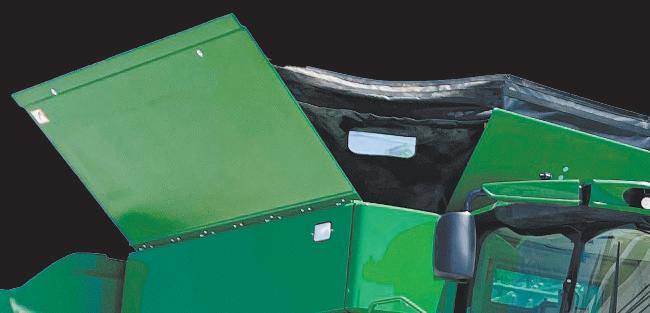










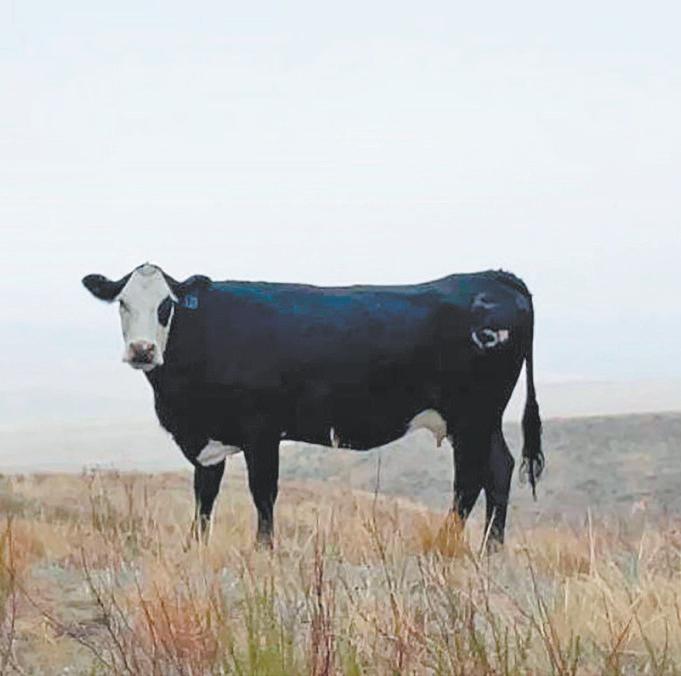

PENFIELD, Ill. — Forty-seven years ago, five buddies were reminiscing about the “good old days” of agriculture when they came up with an idea that has since grown far beyond expectations.
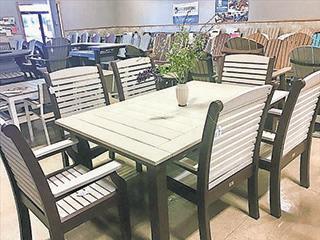
Bill White, Harvey Phillips and Dave, Daniel and Richard Allison met at White’s farm south of Alvin in 1976, marking the beginnings of the I & I Antique Tractor and Gas Engine Club.
The club’s goals included preserving farming methods of the past and preservation and restoration of yesteryear’s equipment.
That led to the notion of an annual get-together to showcase the restored equipment at an annual show that would become
what is now Historic Farm Days.
The first show was held in 1987 at the Middle Fork River Forest Preserve north of Penfield.

The two-day event featured wheat harvesting, plowing, threshing and antique equipment displays.
Over the years, the show grew to include a sawmill, blacksmith shop, tractor pulls and parts vendors. The show expanded to three days in 1992.
An opportunity arose a few years later that would change the course of the annual event and provide another big boost for the growing organization with the creation of the permanent Agriculture History Center and the I & I An-

tique Tractor and Gas Engine Club Showgrounds at Penfield.
The club purchased the 12-acre Penfield Improvement Association property in 1996, which included the former Penfield Grade School and 12 additional acres.
This was done through the generous support of club members and friends in the community who held fundraisers and donated and loaned money to the club and formed the nucleus of a facility to host the annual event.
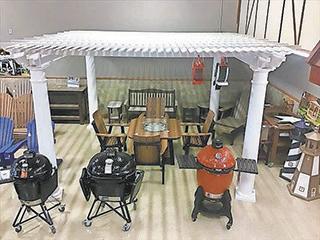


The timing of the Penfield purchase could not have been better.
The 1996 show as supposed to be held at Middle Fork River Forest Preserve. However, County Road 22
was under construction and was not going to be finished in time for the show and two weeks before the show the decision was made to move it the Penfield grounds.
In just two weeks, the Penfield ground was cleared, the former grade school was cleaned up and painted and all of the equipment was moved from the forest preserved to the new show grounds.
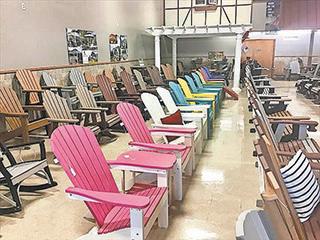
Over subsequent years, club members made improvements to the show site and persevered through challenges.
The school was renovated in 1996 and 1997. Other buildings were added to the show grounds.
Tolono –800-989-1922
Cowden – 217-783-6321
Chrisman– 217-599-3021
WhiteHeath -217-762-7711
Crescent City – 815-683-2126
Dewey -217-485-3440
Danvers – 309-963-4305
CrescentCity –815-683-2126
Dewey – 217-485-3440
Emery – 800-989-1922
Danvers- 309-963-4305
Flatville 217-899-0225
Pierson- 217-578-2215
Hoopeston – 800-989-1922

Ivesdale – 217-564-2271
Jamaica -217-485-3427
Jamaica – 217-485-3427
Ivesdale -217-564-2271
Pierson – 217-578-2215


Tolono – 800-989-1922
Emery- 800-989-1922
Westridge - 217-599-0131
Hoopeston -800-989-1922
White Heath – 217-762-7711
Over time, additions included a new club hall, sawmill building, band pavilion, pork palace, tractor pull track and grandstands, blacksmith shop, north shed, feature brand building, Methodist Church, log cabin and Maplewood one-room schoolhouse.
Historic Farms Days was expanded to four days in 2001.
A museum in the former grade school was established in 2003 to further enhance the visitors’ experience. It’s open throughout the show and by appointment from April through September.
Over the years, the Penfield site has grown to approximately 120 acres. The show continues to draw thousands of spectators
each year to both reminisce and learn about agriculture’s history.
Each show highlights

specific antique tractor and equipment brands in an eight-year rotation. Brands in the rotation
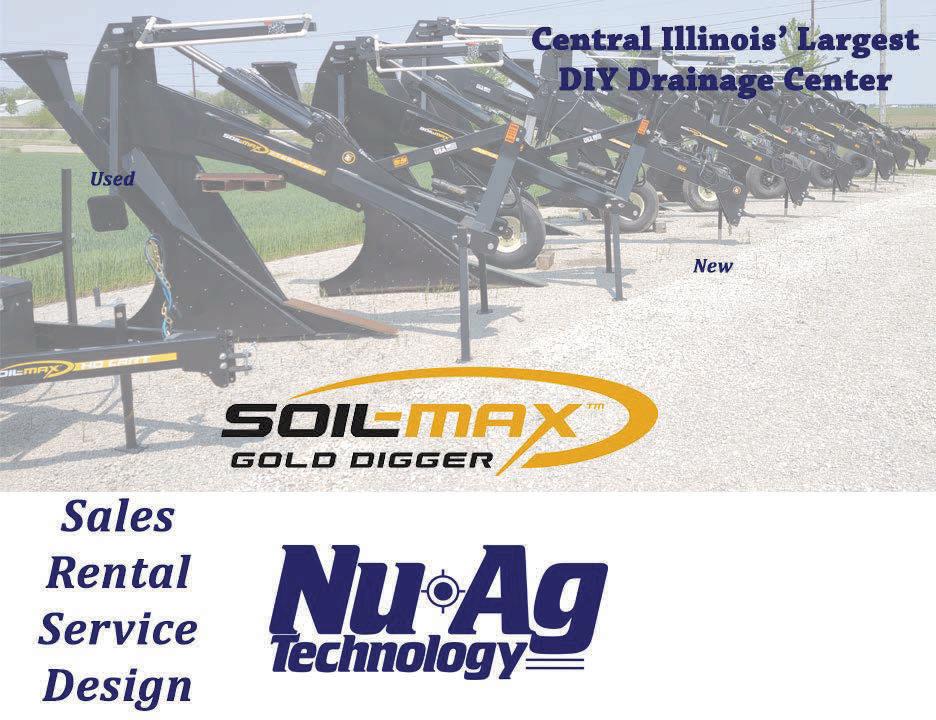
are John Deere, J.I. Case, Allis Chalmers, Oliver, International Harvester, Minneapolis Moline, Ma-
ssey Harris/Ferguson and Ford.
John Deere tractors and equipment will be high -
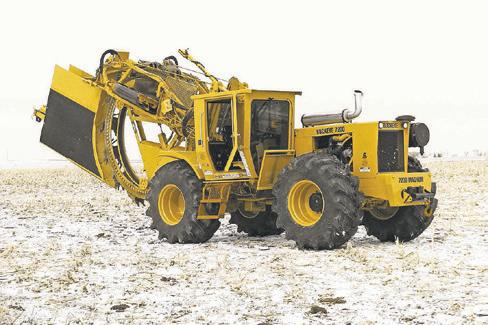

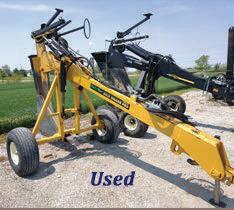
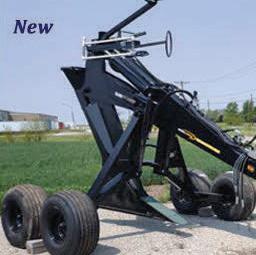
A 1916 International Harvest Mogul 10-20 owned by the Bedolli family of Buffalo, Illinois, rolls along the parade route during the 2019 Historic Farm Days. The I & I Antique Tractor and Gas Engine Club board was forced to cancel the 2020 event due to the uncertainty surrounding the coronavirus pandemic.
lighted this year along with the 100th anniversary of the introduction of the D tractor and E engine.

A new generation of Illini FS, today we are proud, tomorrow we are powerful.





































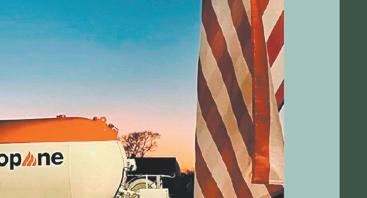




















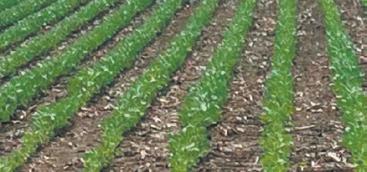

































PENFIELD, Ill. — The 1908 belt-driven sawmill will be cutting logs into planks each day July 13-16 during the Historic Farm Days.

“The main part of the
sawmill is powered by a belt drive off either a steam engine or a gasoline-powered engine like it’s always been since 1908,” said Jon Fourez, who operates the sawmill along with others.
“What people really like is when the steam engine is on it because it puts out the coal smoke and you can hear it pull down,” said Fourez, who has been a member of the I & I Antique Tractor and Gas Engine Club since 1980.
“I had my Farmall M on it last year and when we put the steam engine on the crowd tripled,” he said. “We also have an edger there, so we can take the bark edge off the planks when needed.”
A variety of logs will be cut at the show, including walnut, maple and hickory.

“I have a group of men that help me who are arborists during the rest of the year,” Fourez said. “So, when they cut down trees, they bring the logs to the showgrounds.”
The sawmill came from a family in the Danville area who used it for a number of years.
“One of club members found out that it was sitting in the woods, so he organized the purchase of it,” Fourez said. “It was moved to the showgrounds, refurbished and mounted on concrete so that it was operational again.”
A lot of work was required to get the sawmill back in operation.
“I believe it has been running at the show since 1998,” Fourez said.
Prior to working with the sawmill, Fourez assisted with the stationary baler demonstrations.
“The sawmill really piqued my interest, and when my oldest brother told me help was needed with the sawmill, I got involved,” he said. “I didn’t know anything about it, so
a couple of club members taught me.”
Several years ago, the club hired a professional sawyer from Indiana to help the club members.
“He came for two summers to give us tips on how to run it since we only run it for four days a year,” Fourez said.

“Now I’m teaching three younger men how to take over since I’m in my 60s and the other guy that helps is pushing 80,” he said. “It takes six people minimum to run the sawmill, because if you start multitasking, you end up moving too fast.”
Safety is the No. 1 priority, Fourez said, when working around the 54-inch blade with carbide tips.

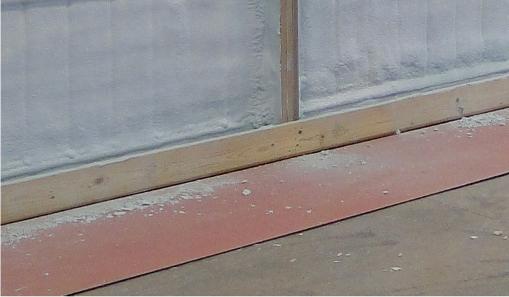
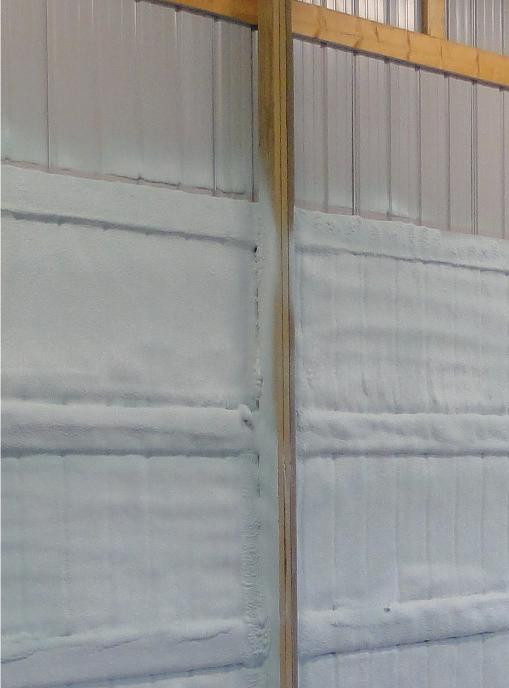
“There’s a lot to do to set that blade up before you start,” he said.
“I think the young guys thought they had everything down pat on how to run it last year and one of them was pushing the blade too hard and it knocked the belt off,” he recalled. “But it was a good thing, because I could teach them what to
do when that happened.”

The sawmill is scheduled to run each day from 10 a.m. to noon and from 2 to 4 p.m.
“We try not to have it running during the parade because the steam engine likes to be in the parade, too,” Fourez said.
Prior to working with the sawmill during the show, Fourez did not have much interest in woodworking projects.
“Now I’m starting to get into woodworking and I’ve made some little things,” he said.
“My daughter’s wedding was last year so I made some cake plates for the wedding and I made a time capsule box where people put notes in it and they will open the box five years from the wedding,” Fourez said.
“I hadn’t made anything like that since industrial arts in high school,” he said. “A local woodworker tutored me, and my daughter asked me to do that the week of the wedding, so I was under the gun to get it done.”

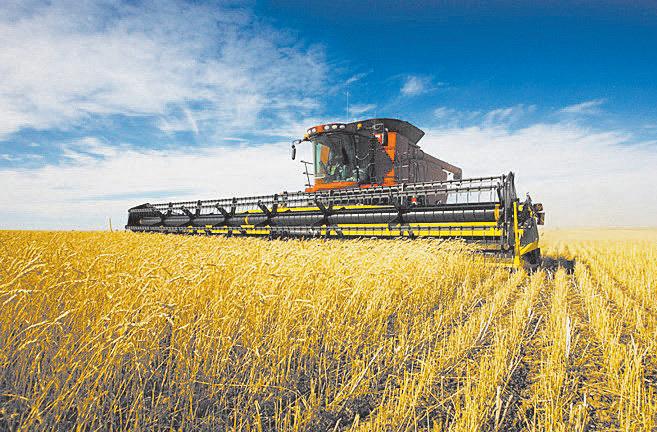

PENFIELD, Ill. — New items are added each year to the exhibits at the museum located in the former Penfield school on the showgrounds of the Historic Farm Days, set for July 13-16.
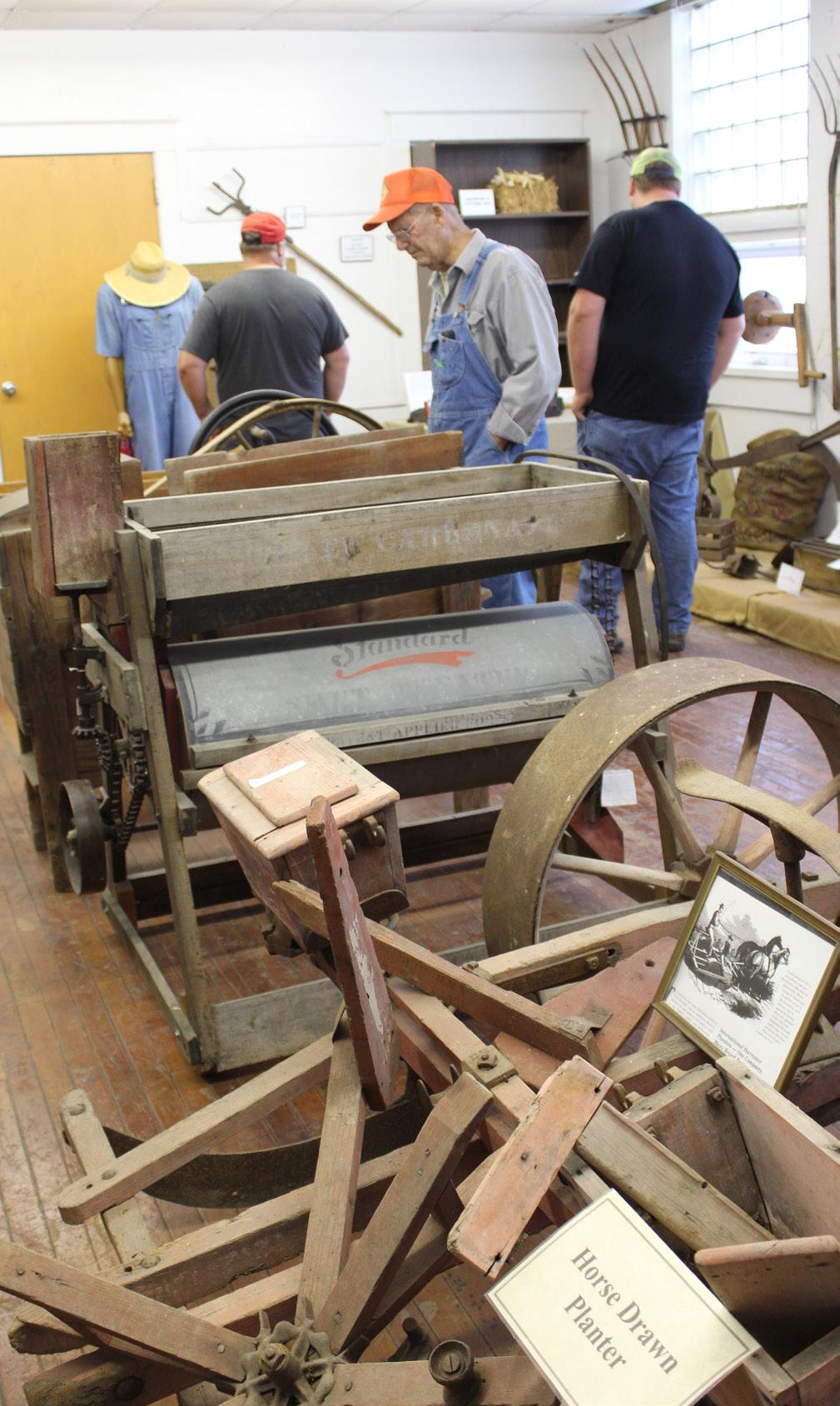

“We’ve got a couple of children’s tables and chairs so we are going to feature those,” said Betty Bensyl, who is co-chairwoman of the museum with Jane Berbaum. “And our pink stove seems to be a hot topic each year.”
“We like to change things around and add a few features,” Bensyl said. “We may have telephones and cameras in a section.”
Bensyl purchased a lady’s wedding blanket at a garage sale that she will add to the household exhibit at the museum.
“It was never used, so it is still on the box it came in and I need to get the date they were married, I’m guessing it was early ‘40s,” she said. “I’m also trying to get a picture of the couple.”
The kitchen area will showcase various dishes.
“We will have a display of ceramic corn dishes,” Bensyl said. “We have a wooden tabletop model radio and a Singer sewing machine.”

“Our household exhibit has an old-fashioned kitchen area with several washing machines,” Berbaum said.
A large variety of farm-related items, ranging from hand tools to implements, fill two floors of the building that once was a place for learning for students from the Penfield area.
Most of the items in the




museum have been donated, and some are on loan from members of the I&I Antique Tractor and Gas Engine Club.
“Sometimes items appear and I may not even know what they are or who donated it,” Berbaum said.
“So, then I do a little Sherlock Holmes work.”

“We like to change things around and add a few features. We may have telephones and cameras in a section.”
Betty Bensyl
In 1996, the I&I Antique Tractor and Gas Engine Club acquired the Penfield Improvement Association property and purchased the old Penfield Grade School and grounds. This formed the nucleus of a facility to host the annual Historic Farm Days event. This general store is part of the museum on the grounds.

Occasionally, Berbaum will hold up an item at an I&I club meeting to ask members if they can identify an item or how it was used.












“It is a never-ending process for our museum workers to catalog the items that come in to document who was the owner and a little information about the piece,” Berbaum said.

Visitors have the opportunity to see two very special items in the museum that are on loan from the Smithsonian Institution.
“The first one we got is the 1961 International Harvester HT-341 Turbine Tractor,” Berbaum said. “The next year, we got the 1903 Hart-Parr tractor.”
In addition to the two tractors, the former gym features a couple of additional tractors, as well as larger items such as a sheller, hay equipment and a couple of buggies.


“T he stairway to the second floor goes to the small farming items,” Berbaum said. “We display tools that might have been used for farming from the 1920s to
The four former classrooms on the main level of the school have been transformed into exhibit areas by the club members.
Museum displays include memorabilia from the Penfield school including a grade school band uniform.
“That’s at least 50 to 60 years old, and we have it displayed on a child mannequin.” Berbaum said.
Another room in the museum is a replica of an International Harvester store.

“It has shelving, and there are displays of all kinds of IH things,” Berbaum said. “I remember going with my dad to buy parts at a store like it.”



The members of the IH Collectors Club Illinois Chapter 10 staff this area of the museum during the show.


“The club members like to gather there because that room has a nice cool breeze,” Berbaum said.


In the corn room of the museum, visitors will see items like planters, seed corn sacks, signs and shellers.
The I&I club uses the former cafeteria in the school as its meeting room.
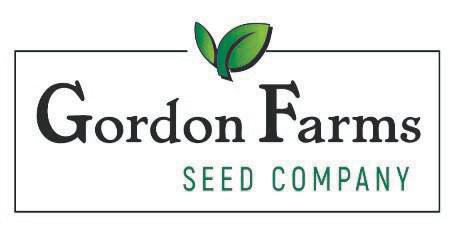
FROM PAGE 24
“On the walls of that room we have posters and memorabilia from the Historic Farm Days from the beginning and also the Half Century of Progress show since day one,” Berbaum said. “There is lots of stuff to look at in that room.”


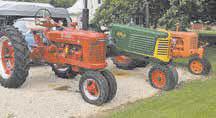
Visitors to the show also
have the opportunity to tour the former Penfield Methodist Church on the showgrounds.
“This year we are planning to have baby pictures and older pictures of people,” Bensyl said. “Then during the show, people can guess who they are.”
In the past, displays in the church have featured crosses, nativity sets, hymn books, bibles and Christmas or naments.
“We always have some
church plates on display,” Bensyl noted.
Berbaum has been involved with the ladies aux-
iliary since it was started.
“My husband, Dave, and his brother joined the club in the early ‘90s, and the









men kept talking about a ladies auxiliary,” she said.
“When Dave was president of the group, he asked
if I would help start the ladies auxiliary, and I’ve been involved ever since we started in 1997.”

PENFIELD, Ill. — From John Deere green to Farmall red to Minneapolis Moline orange and Old Ford blue and more, shoppers will find what they want at the Historic Farm Days toy and vendor show.
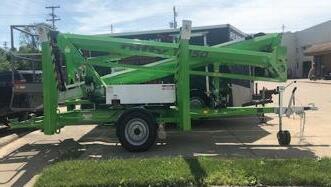
“We have around 60 to 70 vendors this year,” said Barry Maury, one of the coordinators of the toy and vendor show.
Maury said that there will be plenty of green items for sale from toys to parts.
“There will probably be more John Deere items this year, since John Deere is the featured brand, but the

vendors will have plenty of toys and parts from the other brands, too,” he said.
The toy vendors will be mixed in with the tractor parts vendors. The parts vendors will be selling new and used parts.

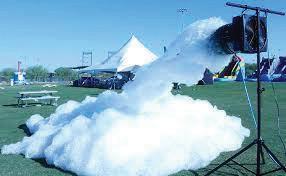

The toy and parts vendors usually stay open until around 5 p.m., Maury said.
PENFIELD, Ill. — A partnership that goes back over 20 years will keep the engines running at Historic Farm Days.
Growmark, in cooperation with Illini FS, the local provider, are the official fuel suppliers for the July 13-16 show presented by the I & I Antique Tractor and Gas Engine Club, as well as the Half Century of Progress later this summer.
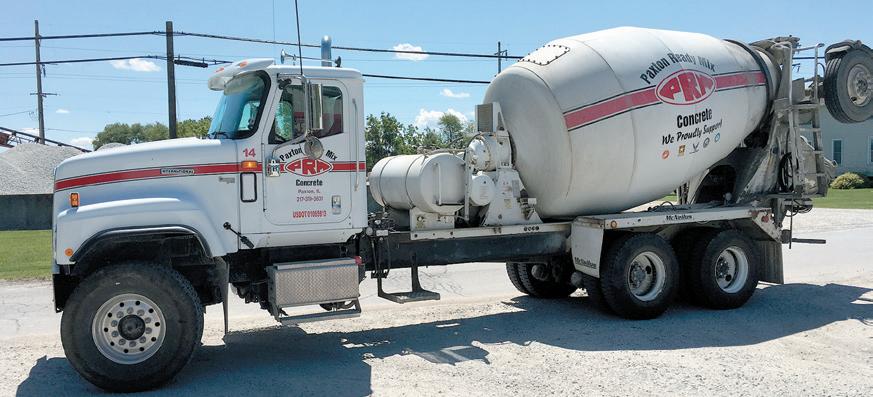
“We really appreciate having the opportunity to work with those guys,” said Brian Neukomm, Illini FS energy management specialist.
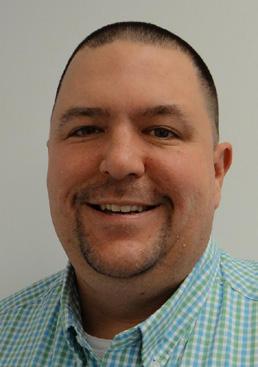
“Most of the guys that are involved with that show, that organize it, put it on and manage it are customers of ours on their farms. So, it just makes perfect sense to return the support they give us back to them in the form of fuel. It’s been a great partnership for both of us.
“We love being a part of it. We have our safety signs all around the premises. We’re there not only promote our products, but we also promote safety, and we want people to come in and enjoy the show, but do it in a safe manner.
“The relationship we have with those guys who put it on is wonderful. It just doesn’t get any better than that.”
Neukomm noted the show’s large draw of vis-


itors, it’s growth over the years and the educational opportunities it offers.

“Historic Farm Days used to be held north of town by the forest preserve and when the old school and the ground around it became available, they seized on that opportunity and it’s amazing the number of people it brings in from so many different states,” he said.
“It helps that they tie in featuring different makes and brands that they feature and there’s not many opportunities like that across the country. So, people who are true diehard iron fans are going to drive a couple of days if they have to with their tractor on a trailer to come to a show like that because you just don’t get those opportunities every day.”
Promoting Historic Farm Days is not limited to rural communities, but also to residents in urban areas.
“It’s twofold where you’re advocating agriculture and having fun at the same time. It’s fun, too, for the farmers who bring their antique iron and show it off,” Neukomm said.
“Advocating it to the cities and the communities to bring the people out, people that really don’t know the processes and the natural evolution of where their food comes from, it really is remarkable.”

